Abstract
Newly hatched chicks were inoculated in the yolk sacs with standardized suspensions of Salmonella anatum, S. heidelberg, or S. infantis. At intervals between 3 and 48 hr postinoculation, chicks from each group were sacrificed, the average number of viable cells per yolk sac was determined, and liver tissue from each chick was examined for Salmonella. Growth patterns of the three species were almost identical when each chick was inoculated with about 3.5 million cells, but S. heidelberg was recovered more frequently from the liver, and caused a much higher percentage of mortality than did either S. anatum or S. infantis. When 100-fold dilutions of the suspension of S. heidelberg were used, mortality and recovery rates of the bacterium from the liver were directly related to the number of cells injected. The logarithmic growth phase was lengthened as the number of cells in the inocula was decreased; consequently, there was little difference in the average number of S. heidelberg cells per yolk sac at 36 or 48 hr postinoculation regardless of number of cells injected. Results of these trials indicated that factors other than rate of multiplication in the yolk sac are responsible for observed differences between Salmonella species in degree of pathogenicity for baby chicks.
Full text
PDF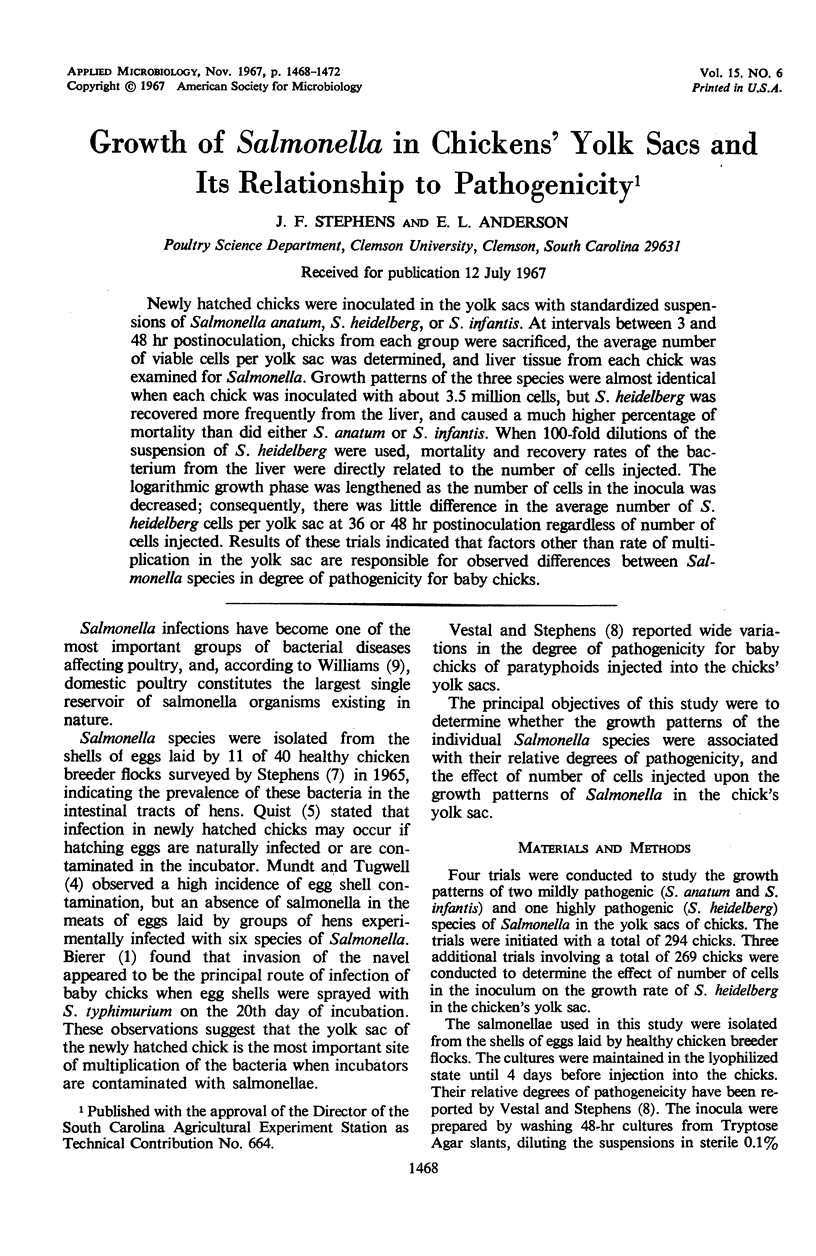
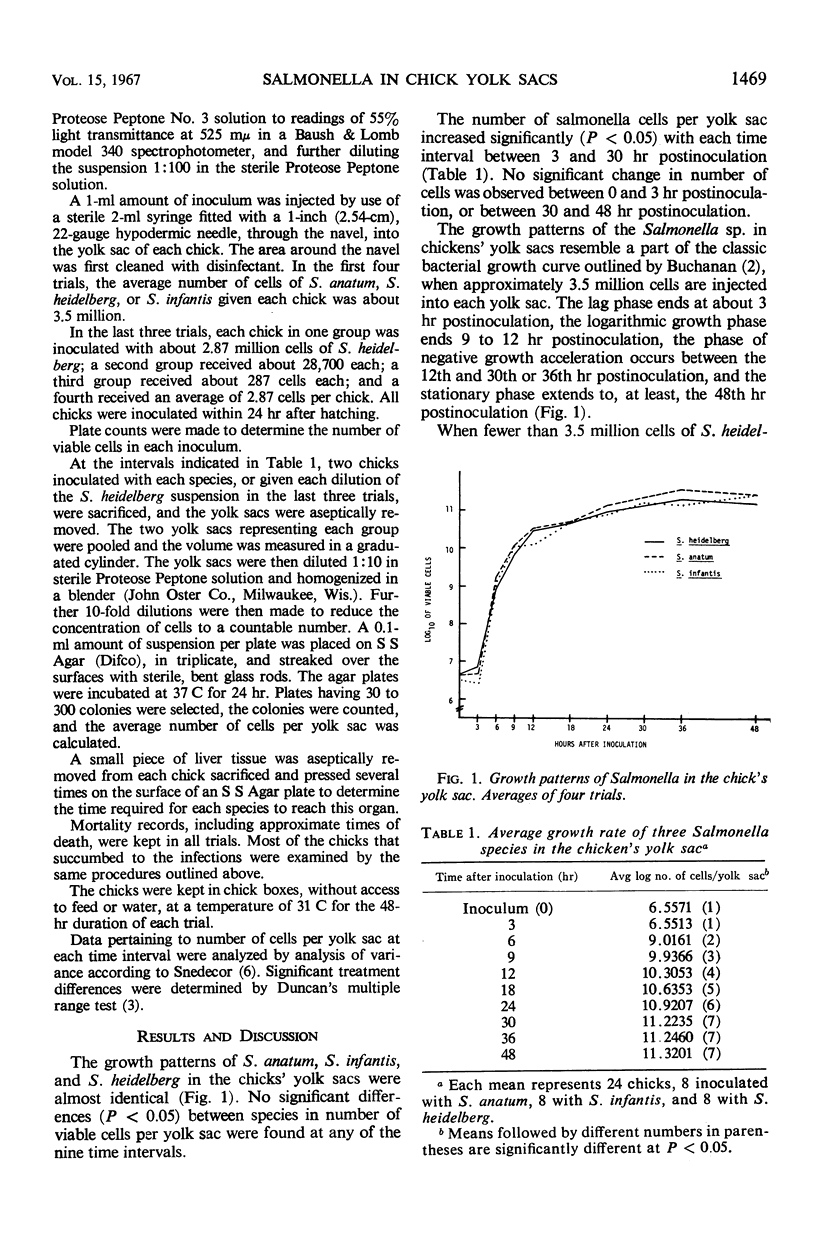
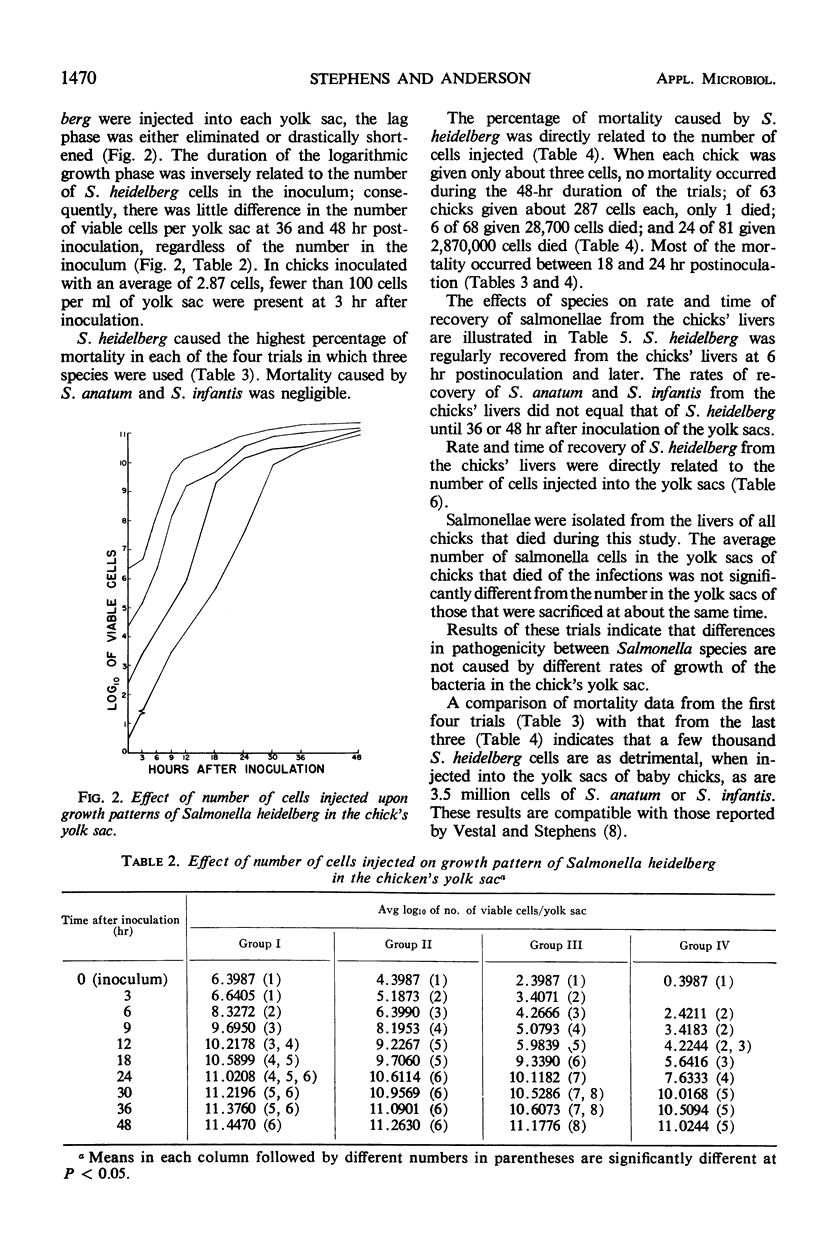
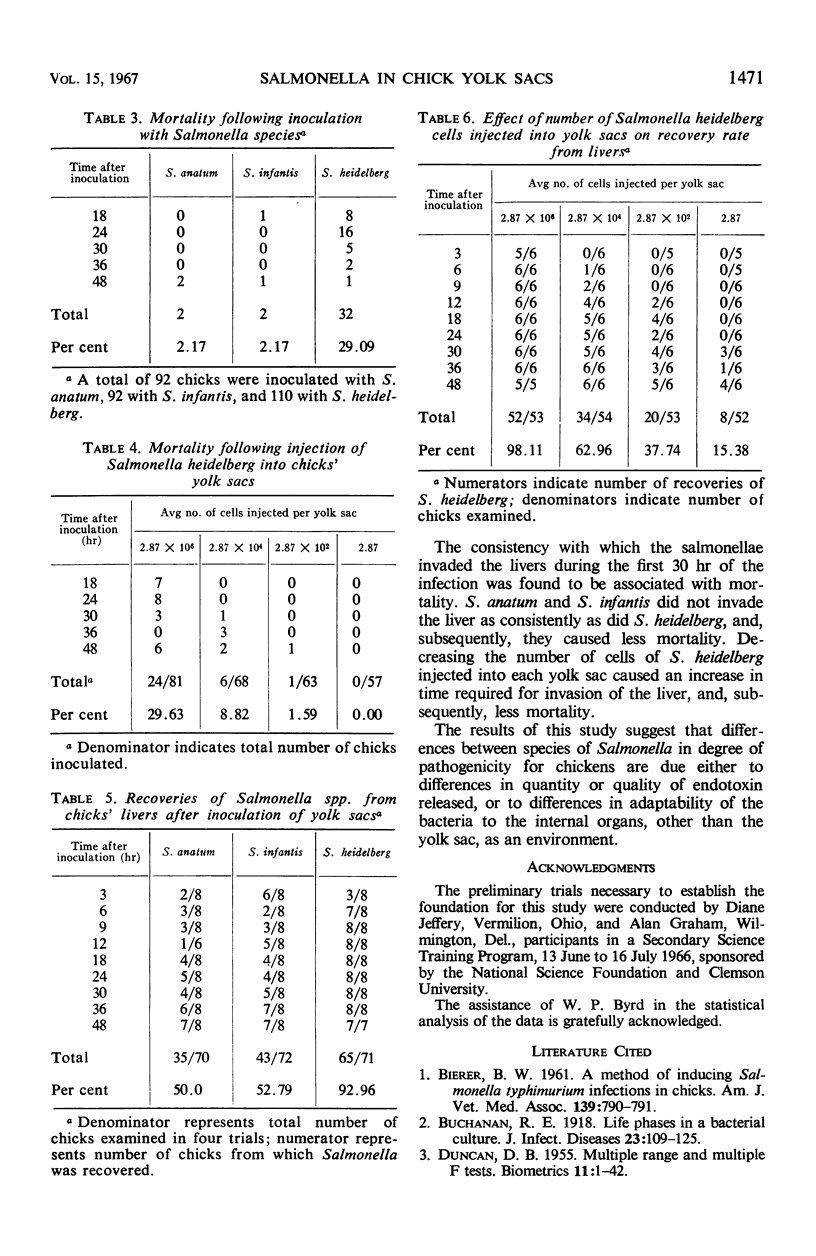
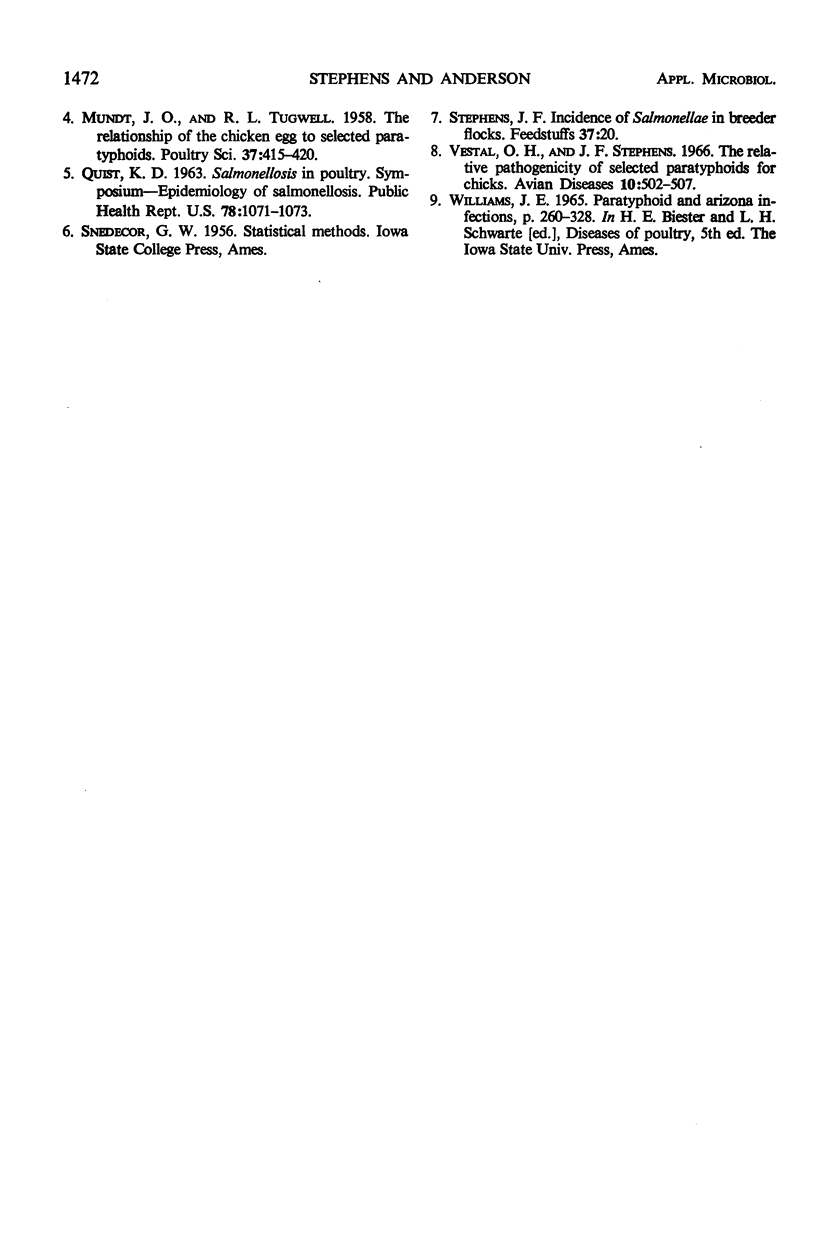
Selected References
These references are in PubMed. This may not be the complete list of references from this article.
- Vestal O. H., Stephens J. F. The relative pathogenicity of selected paratyphoids for chicks. Avian Dis. 1966 Nov;10(4):502–507. [PubMed] [Google Scholar]


